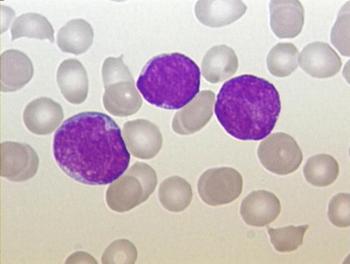
Elacestrant Plus CDK4/6i May Optimize ESR1+ Breast Cancer Outcomes
Patients with ESR1+, ER+/HER2– breast cancer resistant to chemotherapy may benefit from combination therapy with elacestrant.
Although elacestrant (Orserdu) is approved for patients with ESR1–posiitve breast cancer, elacestrant may optimize outcomes when combined with CDK4/6 inhibition in patients with estrogen receptor–positive/HER2-negative breast cancer resistant to chemotherapy, according to Hope S. Rugo, MD.
CancerNetwork® spoke with Rugo, professor and director of Breast Oncology and Clinical Trials Education at the Helen Diller Family Comprehensive Cancer Center at the University of California San Francisco, about whether treatment with elacestrant plus abemaciclib (Verzenio) was associated with any specific patient subgroup benefit following a poster she presented at the
Rugo began by explaining that her team would have to wait to see if an indication for elacestrant emerged outside of its approval in the aforementioned population, given the necessity for the drug in that indication. She subsequently posed a question as to how to use the agent in a combination not approved by the FDA or outlined in treatment guidelines.
She expressed that an indication may have emerged, given a need for patients who have resisted chemotherapy, have had long responses with prior CDK4/6 inhibition and endocrine therapy, and have relatively limited metastatic disease and no end organ failure. Rugo then expressed that she considers CDK inhibition for this patient population, adding that combining CDK4/6 inhibition with selective estrogen receptor degraders (SERD), such as elacestrant, in patients with ESR1 mutations may work in this patient population.
Pooled results from the phase 3 EMERALD Trial (NCT03778931) and phase 1b ELEVATE trial (NCT05563220) reveal that in all efficacy-evaluable patients (n = 27), the median progression-free survival (PFS) was 8.7 months, including an 8.7-month PFS observed in patients with ESR1-positivity. Furthermore, at the recommended phase 2 dose level of 345 mg daily of elacestrant plus 150 mg of abemaciclib (Verzenio) every other day, the median PFS was 8.7 months (95% CI, 7.2-not calculable [NC]).
Safety analysis revealed that no grade 4 adverse events (AEs) were observed with the combination therapy. Additionally, 11 (26%) grade 3 instances of neutropenia/neutrophil decreased were observed.
Transcript:
Elacestrant right now is approved for patients with ESR1 mutations in their tumors, so those are the only patients where we can prescribe elacestrant. We have to wait to see whether or not there are groups of patients where we could get an indication for using the drug, even if they do not have an ESR1 mutation. The group of patients we are going to give it to has ESR1 mutations by necessity. Then the question is, how do you combine the agents when it is not an FDA-approved combination and is not listed in our guidelines yet?
We have to be very judicious. There are some patients who are not going to tolerate chemotherapy, where they have had a long response to their first CDK4/6 inhibitor and endocrine therapy, where they have relatively limited metastatic disease without end organ failure. Those are patients for whom we like to consider CDK after CDK, particularly bone-only patients. If you had an ESR1 mutation, it would be great to combine the CDK4/6 inhibitor with an oral SERD like elacestrant.
Reference
Rugo HS, Tolaney SM, Chan N, et al. Elacestrant plus abemaciclib (abema) combination in patients (pts) with estrogen receptor-positive (ER+), HER2-negative (HER2-) advanced or metastatic breast cancer (mBC). Presented at: San Antonio Breast Cancer Symposium 2024; December 10-13, 2024; San Antonio, TX. Session PS7-07.
Newsletter
Stay up to date on recent advances in the multidisciplinary approach to cancer.

















































































